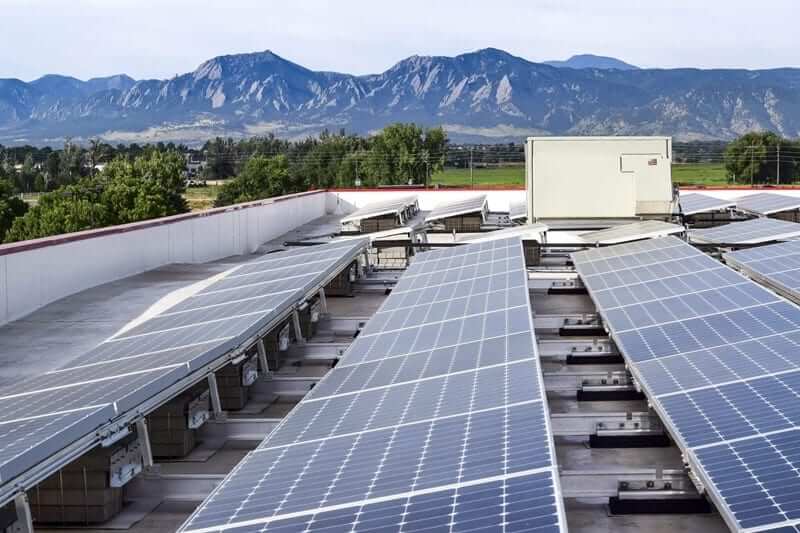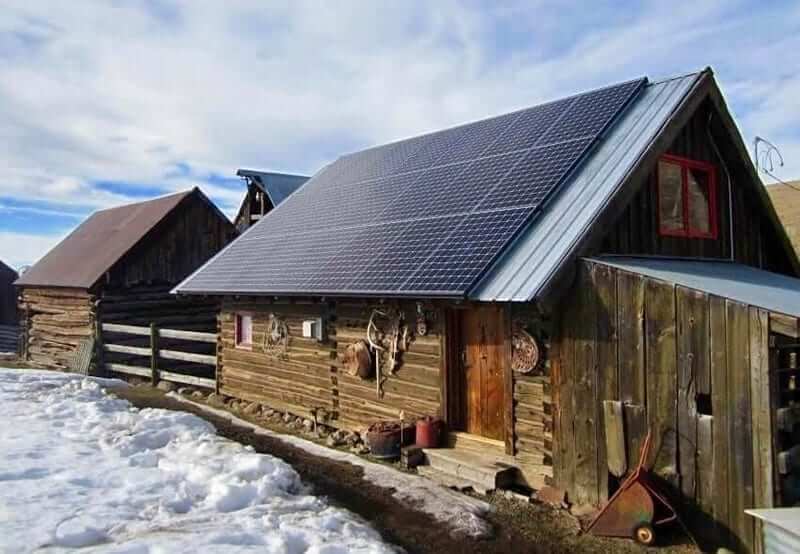Achieve Leed Certification With Solar Energy
Building energy, used for heating, cooling, lighting, and more is among the top demands for energy and causes of greenhouse gas emissions globally. It is no surprise then that the field of building design and operation has become a significant touchpoint for sustainability efforts. Since few buildings were initially designed with energy efficiency in mind or were designed before significant advances, building energy represents one of the lowest hanging fruits in terms of cutting energy usage. One of the best approaches to making a building more energy-efficient and overall, more sustainable is to attain LEED certification.
WHAT IS LEED CERTIFICATION?
LEED is an acronym that stands for Leadership in Energy and Environmental Design and is the most widely used green building certification system in the world. The standard has been used in more than 160 countries and has been applied to more than 94,000 buildings and projects worldwide. The LEED program was created by the non-profit U.S. Green Building Council, founded in 1993. The purpose of the organization is to promote sustainability-focused practices in the building industry. There are several levels and types of certification, and the benefits of employing LEED certification in your project are also numerous. Read on to learn more about the benefits of LEED, different types and levels of certification, and how integrating solar energy can help you attain this green building certification.
THE BENEFITS OF LEED
A LEED-certified building benefits all stakeholders, including the occupants of the building, the building owner, and the global community in general. By lowering the energy consumed to operate a building and increasing insulation efficiency, owners and occupants save big on utility costs over the lifetime of a building. Additionally, the decrease in energy demand corresponds with a reduction in greenhouse gas emissions, and by extension, helps combat climate change.
Beyond cost savings and benefits to the planet, obtaining LEED certification will ensure a higher level of comfort for occupants and a measure of sustainability credibility and prestige. As a result, the value of a building that obtains LEED status will be enhanced, in particular, if it has integrated distributed energy technologies like solar P.V.
Providing long-term cost savings and environmental benefits are great reasons to consider a greener building. Making those who live, work or shop in a building more comfortable and appreciative of the sustainability measures involved is even more reason to build green. Most importantly, the value of a building is markedly enhanced, and as green construction practices become more common, being ahead of the curve with building sustainability will ensure long-term project appreciation and a distinct competitive advantage for the building owner.
LEED RATING LEVELS
There are several systems of LEED certification, including multiple levels of certification ranging from LEED-certified, the most basic, up to LEED Platinum, the highest green building certification offered through the LEED program. The level of certification awarded is based on a 100 point scale requiring a minimum of 40 for basic LEED certification, and a score of 80 for LEED Platinum. The score is based on six categories worth 15 points each, with an additional 10 points available for regional priority and innovation in design.
| Score Category | Requirement |
| Sustainable Sites | 15 points available |
| Water Efficiency | 15 points available |
| Energy and Atmosphere | 15 points available |
| Materials and Resources | 15 points available |
| Indoor Environmental Quality | 15 points available |
| Additional points: Regional Priority Credits and Innovation in Design | 4 points for regional priority
6 for innovation in design – available for above and beyond design in one of the 6 main categories |
The points system, introduced in 2009, is designed to allocate points based on the potential environmental impacts and human benefits of each credit, which are then weighted using reference buildings and project data to assign points in each category. The environmental impact and data standards are based on standards set by the U.S. Environmental Protection Agency and the National Institute of Standards and Technology.
In addition to the straightforward LEED Certified, LEED Silver, LEED Gold, and LEED Platinum awards, there are several sub-certifications for specific project types and applications. These include LEED for New Construction, LEED for Core & Shell, LEED for Schools, LEED for Retail: New Construction and Major Renovations, LEED for Healthcare, LEED for Commercial Interiors, LEED for Existing Buildings: Operations & Maintenance, LEED for Neighborhood Development, and Green Home Design and Construction.

THE SUSTAINABILITY MOVEMENT
This system of certification and the U.S. Green Building Council are both offshoots of the broader sustainability movement and its prioritization of environmental protection and the reduction of resource consumption. Since we depend on our natural environment and the various resources and services it offers humankind, it makes sense to protect the environment and the natural systems we so heavily rely on. Beyond recycling and protecting wilderness areas, ensuring our built environment is as efficient, non-polluting, and carbon-neutral as possible is an excellent step towards securing the planet’s future.
The U.S. government’s Office of Energy Efficiency & Renewable Energy identifies harnessed energy from the sun (solar) as “the cleanest domestic energy source available.” It’s potential to contribute to sustainability efforts is obvious. Reducing unnecessary energy usage is only half the battle, boosting renewable sources of energy production and thereby reducing carbon-intensive energy production like coal or natural gas is equally essential to sustaining our future potential.
SOLAR ENERGY AND LEED CERTIFICATION
The amount of points awarded for solar energy production is a function of the renewable energy production of the building compared to the building’s energy usage. The more solar energy a building produces, the more energy use it offsets, and the closer it is to attaining a perfect score in the energy category. Building efficiency goes hand-in-hand with renewable energy production.
Additionally, buildings that go above and beyond in the “innovation in design” category, by coming up with novel and high-impact approaches are awarded extra points.
SUNPOWER
In the world of green building certification and solar power generation, not all solar panels are created equal. The newest LEED standards include “Cradle to Cradle” certification as a distinguishing mark for products. If solar panels are recognized for reducing the demand for carbon-intensive energy, it makes sense to consider the energy embodied in the manufacturing of solar panels, their product lifespan, and any energy associated with recycling or disposing of them. This attention paid to the entire life cycle of a solar panel is exemplified by the “Cradle to Cradle” certification.
SunPower solar panels have achieved “Cradle to Cradle” silver certification and the U.S. Green Building Council has recognized this achievement by offering more LEED certifying points accordingly. On a typical project, a solar system contributes 5 points, and using Cradle to Cradle certified products and reducing construction waste can yield an additional 9 points. Considering the maximum point total is 100, and the lowest level of certification needs only 40 points, this difference can be huge.
This illustrates the importance of selecting building materials, techniques, and services that not only fulfill the technical requirements of the U.S. Green Building Council, but that fulfill the spirit of Leadership in Energy and Environmental Design. If you want to “Go Green” with your building and seek LEED certification, integrating solar energy production is a great option. If you want to go above and beyond in greening your building, and guarantee you are getting the most sustainable products and services available, consider choosing IPS, SunPower Elite Dealers in Colorado, Massachusetts, and Montana, for your building energy needs.


